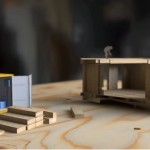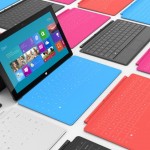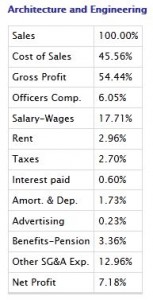Archive for category New Technologies
Adopting New Technologies and Business Practices : When’s a good time?
Posted by Jim Foster in Adoption, BIM, New Technologies on December 21, 2012
 Is there ever a good time to adopt a new technology or business practice? No. Yes. Today. First, ask yourself these questions, “Will it make me or our organization more profitable? Will it lead to new business opportunities?” One broad way to measure profitability is ROI in the investment. How much will it cost to introduce a new technology or business practice, what costs are involved, how quick is the pay back. Are there metrics in place to measure this? One can argue during downtime or between large projects is the best time to invest so they can be incorporated from the beginning of the next project. Cost center issues get caught up with the CFO or whatever other gate keeper that is out there because they cannot be assigned or passed on to a client. Why is this an argument? It might not be said out right, but this type of accounting is just easier and no one ever gets in trouble going with the flow. You were not the one who approved such expenditures so it can be pinned on you. Be an evangelist. Things need to get done. If there is a better way to do it. Do it. You know eventually your competition is going to and will either be A) more profitable B) more efficient or both and start making money at a lower cost than you are. You’re an artist, and it’s always worked this way. Okay, maybe, but that doesn’t scale. The organization is you. And maybe that’s okay but I don’t know how you hire and keep talented people. People like to solve problems and they want the tools to solve them. You have to build a house. Tough to argue for the hammer over the nail gun.
Is there ever a good time to adopt a new technology or business practice? No. Yes. Today. First, ask yourself these questions, “Will it make me or our organization more profitable? Will it lead to new business opportunities?” One broad way to measure profitability is ROI in the investment. How much will it cost to introduce a new technology or business practice, what costs are involved, how quick is the pay back. Are there metrics in place to measure this? One can argue during downtime or between large projects is the best time to invest so they can be incorporated from the beginning of the next project. Cost center issues get caught up with the CFO or whatever other gate keeper that is out there because they cannot be assigned or passed on to a client. Why is this an argument? It might not be said out right, but this type of accounting is just easier and no one ever gets in trouble going with the flow. You were not the one who approved such expenditures so it can be pinned on you. Be an evangelist. Things need to get done. If there is a better way to do it. Do it. You know eventually your competition is going to and will either be A) more profitable B) more efficient or both and start making money at a lower cost than you are. You’re an artist, and it’s always worked this way. Okay, maybe, but that doesn’t scale. The organization is you. And maybe that’s okay but I don’t know how you hire and keep talented people. People like to solve problems and they want the tools to solve them. You have to build a house. Tough to argue for the hammer over the nail gun.
One business proverb always comes to mind when dwelling on this issue.
“If you don’t like new technology you’ll like obsolescence even less.”
Next Time: “It’s all Organization Behavior”
Hey Microsoft I’ve Got Your Game Changer; Right Here
Posted by Jim Foster in BIM, New Technologies, Revit on October 24, 2012
 So when we demo our software, inevitably for a lot of architects we are asked, usually at least once, so will this work on the ipad? Fact is, not yet, not until Revit works on the ipad, which the only way I see that happening is that Citrix does an amazing job serving it through a 4G pipeline, so most likely Revit / BIM Models can be viewed in the field, but not yet interacting with one in a meaningful way. Yes you might argue there are check lists, etc. but I’m speaking about dealing with the actual authoring tool. So while architects ask if PKNail Pro works on the ipad. Salespeople will say, “Hey have you seen the Surface? That could be a game changer for you.” That is full blown windows working on a tablet that will run Revit in the field. The review by David Pogue in the Times, states the Surface “On the hardware front, Microsoft has succeeded brilliantly… amazing, amazing hardware. Now the heartbreak: software.” He argues that operating system is not here yet, but this is Windows RT. I’m talking about taking Full Blown Windows into the field for some serious heavy weight mobile application throw down. Building a Revit Model, a Building Information Model of an existing building, in the field, in real time with just your Surface Tablet, a laser range finder, and some software, some industry specific software that will make you 10x faster. Yes, I’m saying PKNail Pro will do that. It’s effective, it’s fast, and now let’s put a wrapper around it named Surface.
So when we demo our software, inevitably for a lot of architects we are asked, usually at least once, so will this work on the ipad? Fact is, not yet, not until Revit works on the ipad, which the only way I see that happening is that Citrix does an amazing job serving it through a 4G pipeline, so most likely Revit / BIM Models can be viewed in the field, but not yet interacting with one in a meaningful way. Yes you might argue there are check lists, etc. but I’m speaking about dealing with the actual authoring tool. So while architects ask if PKNail Pro works on the ipad. Salespeople will say, “Hey have you seen the Surface? That could be a game changer for you.” That is full blown windows working on a tablet that will run Revit in the field. The review by David Pogue in the Times, states the Surface “On the hardware front, Microsoft has succeeded brilliantly… amazing, amazing hardware. Now the heartbreak: software.” He argues that operating system is not here yet, but this is Windows RT. I’m talking about taking Full Blown Windows into the field for some serious heavy weight mobile application throw down. Building a Revit Model, a Building Information Model of an existing building, in the field, in real time with just your Surface Tablet, a laser range finder, and some software, some industry specific software that will make you 10x faster. Yes, I’m saying PKNail Pro will do that. It’s effective, it’s fast, and now let’s put a wrapper around it named Surface.
So Microsoft, send me a demo, if it’s what I’m expecting I’ll be singing your praises. It’s time to get to work.
*I’m serious Microsoft, so hopefully an identity manager has picked this thread up, or someone wants to make introduction. We are fired up for the Surface and not because we want swag but because it looks like its the size of a beach ball, teed up, and we’re swinging hard.
**Why a picture of LT? Well, it’s LT. Further defined: Left Offensive Tackles are now prized possessions in the NFL and some of the highest paid. That happened when LT lined up. LT changed the game.
3D 4D 5D Go! : The 5th D of BIM Cost Coming Into Focus
Posted by Jim Foster in Adoption, BIM, New Technologies on September 18, 2012
 To reduce costs for any project or product, look at the inputs; can they be improved? Break out the Cost of Goods Sold, or Cost of Sales. In construction the Cost of Sales (which will include material and labor) is at a whopping 84%. This leaves leaving only a 16% gross margin for everything else. To put this in perspective Walmart operates at around a 25% Gross Margin. So is it any wonder the need to lock down costs and reduce waste is more extreme in this industry than most? Compare it to its aligned industry the AE (Architecture Engineering) industry whose gross margin is 3 times as high and there is good reason that BIM was initially more widely adopted and implemented by the construction trades. Any advantage in reducing costs, improving margins or making a firm more competitive in the marketplace will find a receptive audience in construction.
To reduce costs for any project or product, look at the inputs; can they be improved? Break out the Cost of Goods Sold, or Cost of Sales. In construction the Cost of Sales (which will include material and labor) is at a whopping 84%. This leaves leaving only a 16% gross margin for everything else. To put this in perspective Walmart operates at around a 25% Gross Margin. So is it any wonder the need to lock down costs and reduce waste is more extreme in this industry than most? Compare it to its aligned industry the AE (Architecture Engineering) industry whose gross margin is 3 times as high and there is good reason that BIM was initially more widely adopted and implemented by the construction trades. Any advantage in reducing costs, improving margins or making a firm more competitive in the marketplace will find a receptive audience in construction.
Cost saving were first realized with BIMs starting with the 3D coordination of the digital model, clash detection and then scheduling(the 4th D) of construction and the reduction of the cost of labor. Downtime for crews due to change orders or having material unavailable was reduced. Now we are starting to see more firms focus on the cost of materials and how they can be managed and best integrated into a project.
RIB Software , based in Stuttgart Germany is a leading provider of technical ERP (Enterprise Resource Planning) software solutions for the construction industry recently announced the acquistiono of MC2 one of the leaders in cost estimation software for the construction industry or the 5th D of BIM. In the official press release RIB stated ‘Major step taken in the US market for 5D-BIM technology’. In July Trimble acquired WinEstimator another leader in cost estimation in the United States.
Bespoke Homes : Facit Design Using BIM to Design Homes for Assembly
Posted by Jim Foster in BIM, New Technologies on August 17, 2012
 Design and Build have not always been the best of friends, honestly. While you don’t have one without the other there is still a separation, like oil and water, sure you can shake it and it stays mixed for a bit and can make a tasty dressing but without adding something they always separate again. An architect might create a BIM to use for construction but then the CM (construction manager) might take the BIM and say, ‘oh yes, I see what you want to do,’ and then design it for constructablility. Before entering the AEC part of the world I was in product design and manufacturing. Parts were designed to have less waste, to be less complex, to use simpler molds, to reduce cycle time, to have less operations, all to create an easy assemble, cost effective product. There was a version of 3D printing called SLA (Sterolithography) that used lasers that hardened resin a millimeter at a time to create 3D models and CNC machines to hog ABS plastic out, among other materials, to create prototypes of a part and product before you went to mold, because creating the molds was expensive and you wanted to know the parts worked together, and the right tolerances before you cut steel. These processes and machines were expensive but when it was right, all that expense would allow to create inexpensive repeatable parts that could be easily assembled and voila, your buying a blender for $29.99. But the cost for these technologies has plummeted from ZCorp’s 3D printing, to being able to build or buy your own desktop CNC machine or 3D printer. However, this process is still in its infancy in the design/build world of homes, building and architecture.
Design and Build have not always been the best of friends, honestly. While you don’t have one without the other there is still a separation, like oil and water, sure you can shake it and it stays mixed for a bit and can make a tasty dressing but without adding something they always separate again. An architect might create a BIM to use for construction but then the CM (construction manager) might take the BIM and say, ‘oh yes, I see what you want to do,’ and then design it for constructablility. Before entering the AEC part of the world I was in product design and manufacturing. Parts were designed to have less waste, to be less complex, to use simpler molds, to reduce cycle time, to have less operations, all to create an easy assemble, cost effective product. There was a version of 3D printing called SLA (Sterolithography) that used lasers that hardened resin a millimeter at a time to create 3D models and CNC machines to hog ABS plastic out, among other materials, to create prototypes of a part and product before you went to mold, because creating the molds was expensive and you wanted to know the parts worked together, and the right tolerances before you cut steel. These processes and machines were expensive but when it was right, all that expense would allow to create inexpensive repeatable parts that could be easily assembled and voila, your buying a blender for $29.99. But the cost for these technologies has plummeted from ZCorp’s 3D printing, to being able to build or buy your own desktop CNC machine or 3D printer. However, this process is still in its infancy in the design/build world of homes, building and architecture.
Sure you see full scale BIM’s with clash detection and the different disciplines coming together to seeing into the one model, and sequencing and scheduling and for the most part it is on larger projects, under the the guise of IPD (Integrated Project Delivery), but still rarely do you see component parts built off site and brought on to be inserted into the building, although prefab is gaining more steam. Still you have a lot of people creating buildings on site, by hand. And usually they do a fantastic job of it, but imagine if you had a machine creating custom cuts, etc. for assembly, direct from the design, allowing for tighter tolerances, less waste, reduced manpower, better scheduling, well that should be a fine addition to the toolbox of architects and builders.
When I read An Entire House That You Can Snap Together Like a Toy, I was very interested, but more excited to learn about the process. Which brought me to Facit Homes, out of London and then watching their videos. They design for assembly, that is, the thought put into the design is from the product design world, how it goes together, how will it work, how is it most effective, and, AND, this is big, there is a portable CNC machine/truck making custom cutting wood for assembly into the home they designed. That’s awesome. And while they don’t seem to be advertising the fact, they are using Autodesk Revit for the process, as you can see the ribbon in the videos. Regardless of what technology they are using, that’s awesome. Less waste, tighter fits, built for assembly. They get it. Integrated Design Build. Cats and Dogs Living Together. Now That’s a Tasty Burger.
D-Process from Facit Homes on Vimeo.
GTeam : Enabling Browser BIM : The BIM Blender
Posted by Jim Foster in BIM, New Technologies on July 23, 2012
 Recent Press Release from Gehry Technologies introduces GTeam. To explain GTeam, let’s briefly discuss what BIM is suppose to be and I will define it as a collaborative process to reduce waste; wastes of time, materials, resources, etc. How this is done is argued as frequently as the legitimacy of the designated hitter. However, I don’t think you can argue the more people on a platform the better, so when a change is needed or made, the people who need to see it, see it, can comment, iterate, make it better, make it happen. Hence the argument for open standards. Truth is, BIM authoring tools are time consuming to create and maintain so who has a vested interest in building and nurturing such a tool? Besides well meaning folk, not for profit corporations. So what we need is the BIM Blender that will take in all disparate types of information and serve them to people, preferably on an iPad. Why iPad? Because, and I mean this as a compliment, a three old can operate an iPad. If something better comes along, so maybe a 16 month can operate it, so be it but right now, let’s admit everyone asks if your app, program, etc, runs on an ipad. So this blender need to take in every format, regardless of the authoring tool, regardless of the format, and be able to organize it and allow the user to interact with it in a meaningful way. Supposedly Horizontal Glue, now part of Autodesk 360 was a tool like this, and now we have GTeam from Gehry Technologies, which makes the argument, ” is the easiest platform for teams to collaborate and share documents, files and 3D building information online. Architects, designers, engineers, contractors, consultants, and owners use GTeam to reach consensus faster, reduce change orders, save time, get more work and reduce project costs.” Like Spike Lee said, “the mo’ colors, the mo’ better’ and the more people working on getting the pipe fitter on the same page, as the engineer, as the architect, the mo’ better, and the folks at Gehry have some experience getting people on the same page.
Recent Press Release from Gehry Technologies introduces GTeam. To explain GTeam, let’s briefly discuss what BIM is suppose to be and I will define it as a collaborative process to reduce waste; wastes of time, materials, resources, etc. How this is done is argued as frequently as the legitimacy of the designated hitter. However, I don’t think you can argue the more people on a platform the better, so when a change is needed or made, the people who need to see it, see it, can comment, iterate, make it better, make it happen. Hence the argument for open standards. Truth is, BIM authoring tools are time consuming to create and maintain so who has a vested interest in building and nurturing such a tool? Besides well meaning folk, not for profit corporations. So what we need is the BIM Blender that will take in all disparate types of information and serve them to people, preferably on an iPad. Why iPad? Because, and I mean this as a compliment, a three old can operate an iPad. If something better comes along, so maybe a 16 month can operate it, so be it but right now, let’s admit everyone asks if your app, program, etc, runs on an ipad. So this blender need to take in every format, regardless of the authoring tool, regardless of the format, and be able to organize it and allow the user to interact with it in a meaningful way. Supposedly Horizontal Glue, now part of Autodesk 360 was a tool like this, and now we have GTeam from Gehry Technologies, which makes the argument, ” is the easiest platform for teams to collaborate and share documents, files and 3D building information online. Architects, designers, engineers, contractors, consultants, and owners use GTeam to reach consensus faster, reduce change orders, save time, get more work and reduce project costs.” Like Spike Lee said, “the mo’ colors, the mo’ better’ and the more people working on getting the pipe fitter on the same page, as the engineer, as the architect, the mo’ better, and the folks at Gehry have some experience getting people on the same page.
What’s That in the Sky? Sweet Jesus it’s an Autodesk Octo-Copter.
Posted by Jim Foster in BIM, Built Environment, New Technologies on June 21, 2012
Autodesk deployed it’s Octo-Copter in Africa for high resolution reality capture. This was done in support of Louis Leakey in Kenya in search of our ancestral trails
Additonally, they deployed it on their head quarters in San Rafael.
From the Gizmag Website:
The Mikrokopter Octocopter is an 8-rotor flying platform which has a 2 kg (4.4 lbs) capacity to carry cameras. It can be flown using an internal camera to give the operator a copter-based vantage point on video glasses, or can be programmed to follow a GPS-controlled flight path. An Octocopter can fly autonomously at altitudes up to 1000 meters (3280 feet), or can be manually flown as high as 3500 meters (11,480 feet). In the Autodesk tests video was captured using a GOPro Hero 2 camera, and the still pictures from which the 3D model was later built were taken by a remotely triggered Canon SLR camera.
Autodesk 123D is a suite of programs which allow a user to create, manipulate, and construct 3D objects using a 3D printer. Catch is part of the 123D suite, and offers a standalone software package that helps you create 3D models from a series of 2D digital images of an object or a scene. The spatial resolution available using 123D Catch is about 1 part in 600, or 0.167% of the total size of the object pictured, so you would be able to accurately place individual windows on a 3D model of a Boeing 747.
New Windows Surface Tablet Puts Revit in the Field.
Posted by Jim Foster in New Technologies, Revit on June 20, 2012
 With Microsoft’s announcement of Windows 8, and the unveiling of the Surface Tablet, it finally appears there will be a tablet form factor that will run Revit in the field. According to the press release there will be two versions, one based on the ARM chip and another based on the Intel i5 chip running Windows 8 Pro. The iPad, as much it is great for so many tasks, simply does not have the horsepower to run Revit in the field, and delivering the type of user experience one would want with heavyweight programs is a real limitation in the ‘cloud.’ I understand Autodesk is now counting solely on Citrix to provide its remote platform but even if you are driving Revit remotely would you want to rely on whatever internet connection you have? That’s just not a funnel I would want to count on in the field.
With Microsoft’s announcement of Windows 8, and the unveiling of the Surface Tablet, it finally appears there will be a tablet form factor that will run Revit in the field. According to the press release there will be two versions, one based on the ARM chip and another based on the Intel i5 chip running Windows 8 Pro. The iPad, as much it is great for so many tasks, simply does not have the horsepower to run Revit in the field, and delivering the type of user experience one would want with heavyweight programs is a real limitation in the ‘cloud.’ I understand Autodesk is now counting solely on Citrix to provide its remote platform but even if you are driving Revit remotely would you want to rely on whatever internet connection you have? That’s just not a funnel I would want to count on in the field.
At first glance you might say so what, not a big deal. However, if I can have a device that toggles between my heavyweight AEC programs, and delivers content the way my my iPad does then I might have an iPad to sell you; because frankly I am sick of devices, I live between the Mac and Windows camp, I’m tired of it. I used to be an Apple fanatic, even being the only kid in business school with a Mac, the disastrous PowerPC model, but what was not to like about Apple. Now, how did we get to the point where Microsoft is the little guy, relatively speaking. Now if they could get their content management into a spot that works the way you want. Imagine the central Revit model up on the sky drive, you check it out in the field, do your work, update it, booyah.
I think single purpose, highly specific apps are great to digest data, not for the creation of it so I am real interested in the melding of tablet like functionality with horsepower. I’m rooting for the little guy, I’m rooting for Microsoft.
********************
BTW anyone else bother to notice the blending and vertical integration of software/hardware. Apple, obviously. Google buys Motorola. Microsoft with multiple attempts, Zune, XBox, etc. and now Surface. And more germane to AEC Trimble buys Tekla and SketchUp. Seems to be the biz strategy du jour, watch for more.
For Those That Like to Tweet… A Free iPad
Posted by Jim Foster in BIM, Built Environment, New Technologies, Point to Point Laser Technology on June 13, 2012
 Tweet about PKNail Pro’s Proven Field to BIM Technology, Get Entered Automatically
Tweet about PKNail Pro’s Proven Field to BIM Technology, Get Entered Automatically
PointKnown is giving away a free Apple iPad to one lucky Twitterer…er, tweeter, i.e. one who uses the service twitter to disseminate clever, witty, informative text burst in 140 characters or less. PointKnown does not claim to be clever, witty or informative, but will claim producing kick ahh…whup ahh…Excellent productivity software tools for documenting existing buildings.
How to Enter
To participate, simply tweet using the hash tags below:
#pknail #revit #bim and mention ‘PKNail Pro’
Examples
“PKNail Pro turbo charges Revit and modeling existing buildings #pknail #revit #bim”
or “Capture Existing Buildings Directly In Revit with PKNail Pro, 5x-10x faster #pknail #revit #bim”
less pertinent but still acceptable “We came, we saw, we conquered with PKNail Pro, #pknail, #bim , #revit”
less pertinent verging to the non-sequitur but still acceptable…
“beautiful software for happy people PKNail Pro, #pknail, #bim, #revit”
Remember: follow @pointknown on Twitter for the winner announcement:
We are on the road with Microcad and have other excellent resellers including, Seiler Instrument (ask for Harvey) and CADDFX
Legal Mumbo Jumbo
Rules & Conditions
1. This giveaway is offered by PointKnown LLC and is open to anyone with a Twitter account who is at least 16 years of age. Employees of PointKnown, LLC. and/or its affiliated companies and family members of such employees may enter the contest but are not eligible to win.
2. The giveaway will begin at the time of this post and end 62 days after initial post, a winner will be randomly chosen, much like the number 62, and announced via twitter through @pointknown
3. One giveaway will be available: a 16GB Wi-Fi Apple iPad or $499 Apple Store Credit, winner’s choice.
4. You must prove ownership of the winning entry and provide your email address to collect the prize.
5. To enter the giveaway you must send out a tweet from your own Twitter account that includes the #hash tags above in your message.
6. Entries using automated tweets will be disqualified, however there is no limit on the number of tweets you may enter.
7. PointKnown LLC will choose a winner randomly from all the entries within the specified period. The winner will be announced from our twitter account (@pointknown) once the contest ends.
8. Entrants agree to allow @pointknown to use their twitter handles and entry tweets for marketing purposes.
9. Neither PointKnown LLC. nor its affiliated companies shall have any liability for (i) any technical failures of any kind, including but not limited to malfunctions, interruptions or disconnections in phone lines or network hardware or software; (ii) technical or human error which may occur in the administration of the giveaway; (iii) any malfunction of or damage to the prize; (iv) any corruption, typos or hacking of prize winners email accounts; or (v) any restrictions or delays imposed by any customs authorities or any import or other taxes of any kind imposed by any taxation authority in respect of the prizes.
Autodesk Continues to Round Out Portfolio : Acquires Vela Systems
Posted by Jim Foster in BIM, New Technologies on June 8, 2012
 Announced today, Autodesk Acquires Vela Systems. If you are developing products within the Building Life Cycle somewhere between and including design to demolition, you are in play. Trimble has been going on an acquisition rampage with its acquisition of Tekla and Sketch Up and Autodesk never one to be a wallflower has just acquired Vela. This is almost 2 years to the date that Vela was unveiled publicly. No idea of their market size but their own press releases state that they are more than ‘twice as big’ as any competitive Field BIM Systems. Regardless, market penetration means little at this point now that the Autodesk marketing/sales system is behind it. How big was Revit in 2006 when they were purchased. A primer of Vela’s Key Features below. Congrats Vela folks, job well done.
Announced today, Autodesk Acquires Vela Systems. If you are developing products within the Building Life Cycle somewhere between and including design to demolition, you are in play. Trimble has been going on an acquisition rampage with its acquisition of Tekla and Sketch Up and Autodesk never one to be a wallflower has just acquired Vela. This is almost 2 years to the date that Vela was unveiled publicly. No idea of their market size but their own press releases state that they are more than ‘twice as big’ as any competitive Field BIM Systems. Regardless, market penetration means little at this point now that the Autodesk marketing/sales system is behind it. How big was Revit in 2006 when they were purchased. A primer of Vela’s Key Features below. Congrats Vela folks, job well done.
Vela Field Management Suite Key Features
The Vela Field Management Suite of Web, Mobile and Reports enables everyone throughout the enterprise to access documents, field activities and reports in the office and in the field. Since its release a year ago, and to further broaden the usability throughout the enterprise, Vela Systems has expanded upon the following features:
- Field BIM® for commissioning and handover that ties BIM to the field for data and document exchange
- Company-level checklist and issue template capabilities to implement and enforce quality and safety programs
- Increased accessibility via the Internet on multiple devices like iPads and Smart Phones
- Better web-based reporting that turns field data into powerful information for managing quality, safety and risk at the project and company level
Flame Virus Wants Your CAD
Posted by Jim Foster in CAD, New Technologies on June 7, 2012
 As reported by Industry Week, ‘The world’s most sophisticated malware had a ‘high interest in AutoCAD drawings,’ Kaspersky Lab said. The Flame Virus, which mainly affected computers in the Middle East used a loophole in Microsoft software tricking computers into thinking they are downloading a legitimate Windows update. This fact, being reported by Reuters, The Times, CNET, and others. CNN reported that Flame can turn on your microphone, webcam, log e-mails, etc. I have not read if it can do anything malicious itself as the Stuxnet Virus did to Iran Uranium enrichment facilities by having centrifuges essentially tear themselves apart. However, going after CAD, essentially engineering and building documents can let whoever is collecting this information know what you are designing and building, and possibly have the blueprints of the building you are designing and building in. And you thought google knowing that you smoke cigars and eat ice cream on your back porch at 5:23 PM was intrusive.
As reported by Industry Week, ‘The world’s most sophisticated malware had a ‘high interest in AutoCAD drawings,’ Kaspersky Lab said. The Flame Virus, which mainly affected computers in the Middle East used a loophole in Microsoft software tricking computers into thinking they are downloading a legitimate Windows update. This fact, being reported by Reuters, The Times, CNET, and others. CNN reported that Flame can turn on your microphone, webcam, log e-mails, etc. I have not read if it can do anything malicious itself as the Stuxnet Virus did to Iran Uranium enrichment facilities by having centrifuges essentially tear themselves apart. However, going after CAD, essentially engineering and building documents can let whoever is collecting this information know what you are designing and building, and possibly have the blueprints of the building you are designing and building in. And you thought google knowing that you smoke cigars and eat ice cream on your back porch at 5:23 PM was intrusive.



